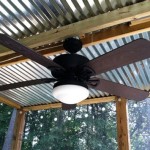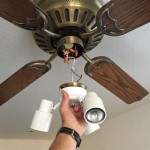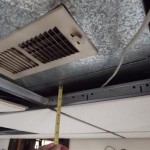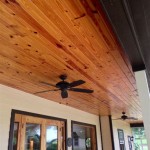Outdoor ceiling heaters are an increasingly popular option for keeping your outdoor space warm and cozy. Whether you’re looking for a way to heat your patio, porch, or deck, outdoor ceiling heaters can make all the difference when the temperature drops. But, like any home purchase, it’s important to be informed before you make a decision. Here, we cover everything you need to know about outdoor ceiling heaters, including the types of outdoor ceiling heaters, the benefits of outdoor ceiling heaters, and how to install an outdoor ceiling heater.
Types of Outdoor Ceiling Heaters
Outdoor ceiling heaters come in two main types: electric and gas. Electric ceiling heaters are powered by electricity, while gas ceiling heaters run on either natural gas or propane. If you choose an electric ceiling heater, you will need to install an outlet and make sure your home’s wiring is up to code. Gas ceiling heaters require a gas line to be installed, and are typically more expensive to install than an electric ceiling heater. However, gas ceiling heaters can be more efficient in the long run, as they require less energy to heat an area than electric ceiling heaters.
When choosing a ceiling heater, you’ll also need to decide between a radiant and a convective heater. Radiant heaters use infrared technology to heat the objects in their vicinity, while convective heaters use air circulation to distribute the heat. Radiant heaters are usually more efficient and better at heating up a space quickly, while convective heaters are better for keeping a space warm for an extended period of time.
Benefits of Outdoor Ceiling Heaters
Outdoor ceiling heaters offer a variety of benefits, from convenience to energy savings. Here are just a few of the advantages of installing an outdoor ceiling heater:
- Convenience: Outdoor ceiling heaters are easy to install and require little maintenance, making them a convenient and low-maintenance option for keeping your outdoor space comfortable.
- Energy Savings: Outdoor ceiling heaters can help you save energy by allowing you to heat only the areas you need, rather than heating your entire home.
- Safety: Outdoor ceiling heaters are designed to be safe and secure, with features like automatic shut-off and built-in safety features.
- Versatility: Outdoor ceiling heaters are available in a variety of sizes and styles, so you can find one that fits your outdoor space perfectly.
How to Install an Outdoor Ceiling Heater
Installing an outdoor ceiling heater is not a difficult task, but it is important to take all the necessary safety precautions. Here are some steps to follow when installing an outdoor ceiling heater:
- Check the local building codes to ensure your heater meets all safety and installation requirements.
- Check the manufacturer’s instructions for the type of ceiling heater you have purchased.
- Make sure the area is well-ventilated to allow the exhaust gases from the heater to escape.
- Mount the heater securely and make sure all electrical connections are properly secured.
- Check for any gas leaks and make sure the gas line is securely connected to the heater.
- Turn on the power and test the heater to make sure it is working properly.
Installing an outdoor ceiling heater is a relatively simple process, but it’s important to take all the necessary safety precautions. When in doubt, consult a professional for help.
Conclusion
Outdoor ceiling heaters are an increasingly popular way to keep your outdoor space warm and cozy. Whether you choose an electric or gas ceiling heater, you can enjoy the benefits of a warm and inviting outdoor space. Just make sure you do your research and install the heater correctly to ensure your safety. With the right outdoor ceiling heater, you can enjoy your outdoor space even in the chilliest of temperatures.















Related Posts








